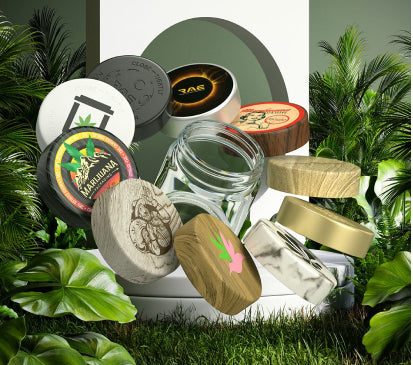When you hear the term "marijuana phenotype," you might think of something technical or scientific. While it does have roots in biology, it's not as complicated as it sounds. If you've ever wondered why two plants from the same strain might look or smell different, phenotypes are the reason. They help explain the diversity and uniqueness found even within the same type of marijuana.
This article will walk you through the concept of phenotypes in marijuana, why they're important, and how they influence the characteristics of cannabis plants. From the basic science to practical implications for growers and consumers, we'll explore everything you need to know to better understand these fascinating variations.
What Exactly is a Marijuana Phenotype?
To break it down simply, a phenotype is the set of observable traits of a plant. These traits include everything from the plant's height, leaf shape, and color to its aroma, flavor, and effects. So, when we're talking about marijuana phenotypes, we're really just discussing the different ways a cannabis plant can express its genetic code.
Every cannabis plant has a genotype, which is its genetic makeup. However, the phenotype is how that genetic code manifests in the real world. This expression is shaped by the plant’s environment—factors such as light, temperature, humidity, and nutrients. Think of it as identical twins who grew up in different cities; they might share the same DNA, but their experiences and environments will shape their individual characteristics.
For instance, two seeds from the same strain might grow into plants with different colors or scents based on the conditions they're grown in. This variability is why growers often select plants with desirable phenotypes to cultivate further, aiming to replicate those favorable traits in future generations.
Why Do Phenotypes Matter in Cannabis Cultivation?
Understanding phenotypes is crucial for anyone interested in cannabis cultivation. For growers, selecting the right phenotype can mean the difference between a crop that's just okay and one that's exceptional. Different phenotypes of the same strain can offer varying levels of THC, CBD, or other cannabinoids, which directly affects the plant’s overall impact.
Additionally, phenotypes influence how a plant will grow. Some may be more resistant to pests and diseases, while others might yield more buds or require less maintenance. By identifying and cultivating the best phenotypes, growers can optimize their efforts and produce plants with the specific characteristics they desire.
This selection process is akin to choosing a puppy from a litter based on its temperament and energy level. Just as you might want a dog that’s calm and friendly, growers might look for a plant that’s resilient and potent. Selecting the right phenotypes can lead to a more successful, and potentially more profitable, harvest.
How Do Growers Identify and Select Phenotypes?
Identifying and selecting the ideal phenotype is both an art and a science. It begins with planting multiple seeds from a single strain and then observing the resulting plants over time. As the plants grow, careful attention is paid to their traits—everything from size and shape to smell and taste.
Growers often use a "pheno hunt" to find the best traits within a strain. This involves growing a large batch of seeds and meticulously noting each plant’s characteristics. Once they identify the plants with the most desirable traits, those are selected for further breeding or cloning.
This process can take several growing cycles, as growers aim to consistently replicate the preferred traits. Patience and attention to detail are key, much like a chef perfecting a recipe by adjusting ingredients until the dish is just right.
Environmental Factors Affecting Phenotypes
The environment plays a significant role in how a phenotype expresses itself. Even if two plants share the same genetic makeup, differences in their surroundings can lead to noticeable variations. Here are some key environmental factors that can influence phenotypes:
- Light: The amount and quality of light can affect a plant’s growth pattern and cannabinoid production.
- Temperature: Extreme temperatures, whether too hot or too cold, can stress plants and alter their development.
- Humidity: Moisture levels can impact a plant’s health and susceptibility to mold or pests.
- Nutrients: Access to the right nutrients at the right time is crucial for optimal growth and flavor.
- Soil and Water: The quality of soil and water can also influence how a plant expresses its genetic traits.
Balancing these factors requires careful planning and monitoring, much like a gardener adjusting conditions to coax the best blooms from their flowers. By controlling these variables, growers can emphasize certain traits and minimize others, shaping the phenotype to their liking.
The Genetic Influence on Marijuana Phenotypes
While the environment plays a major role, genetics are the blueprint for a plant’s potential. Every cannabis seed contains a unique set of genetic instructions, which lay the foundation for its phenotype. These genetic factors determine what traits are possible, even though the environment will influence which traits actually develop.
For example, a plant might have the genetic potential to produce purple buds, but if the environment doesn’t trigger that expression, the buds may remain green. This is why growers often experiment with different conditions to see how they can bring out specific genetic traits.
Understanding genetics is like knowing the script of a play before seeing it performed. You know what’s possible, but the final performance might still hold surprises depending on the actors and directors involved—similarly, a plant's phenotype will unfold based on both its genetic script and environmental influences.
Phenotypes and Consumer Experiences
For consumers, phenotypes can significantly affect the experience of using cannabis. Different phenotypes within the same strain can offer a range of effects, flavors, and aromas. This diversity is part of what makes cannabis so versatile and appealing to users with varying preferences.
Consider the strain Blue Dream, which is renowned for its balanced effects and pleasant flavor. However, different phenotypes of Blue Dream might lean more towards a relaxing body high or a stimulating cerebral experience, depending on their specific traits. This can make it challenging for consumers to know exactly what they’re getting unless the grower has accurately described the phenotype.
For this reason, many dispensaries and growers provide detailed information about the phenotypes they carry, helping consumers make informed choices. It's a bit like choosing a wine; even within the same type of grape, different vineyards and vintages can offer unique tasting experiences.
Challenges in Breeding for Specific Phenotypes
Breeding cannabis to achieve specific phenotypes is both rewarding and challenging. It involves a lot of trial and error, as well as a deep understanding of genetics and environmental influences. Breeders must be patient and willing to experiment, often over many growing seasons.
One of the main challenges is maintaining consistency. Even when a breeder identifies a desirable phenotype, replicating it in future generations can be tricky due to genetic variation and environmental changes. Success requires careful record-keeping, observation, and sometimes a bit of luck.
This process is not unlike what happens in dog breeding, where breeders aim for certain traits like temperament and appearance. Just as a dog breeder might focus on creating a breed that’s both friendly and hypoallergenic, cannabis breeders strive to produce plants that consistently deliver the desired effects and flavors.
The Future of Phenotype Research in Cannabis
As cannabis research continues to advance, the understanding of phenotypes is also evolving. Scientists and breeders are using new technologies, like genetic mapping and data analytics, to better predict and control phenotypic outcomes. This could lead to even more precise breeding techniques and a wider array of cannabis products tailored to specific consumer needs.
Imagine being able to select a strain not just for its general lineage but for the exact phenotype that matches your preferences for flavor, effects, and even medicinal benefits. This kind of customization could revolutionize the way we think about and use cannabis.
While it's hard to say for sure what the future holds, the potential for innovation in phenotype research is exciting. It promises a world where cannabis products are even more diverse and personalized, catering to the unique needs and tastes of every consumer.
Practical Tips for Growers and Consumers
For growers, understanding phenotypes can enhance cultivation practices. By selecting and optimizing the right phenotypes, growers can improve yield, potency, and overall plant health. Here are some practical tips:
- Start with Quality Seeds: Choose seeds from reputable sources to ensure a healthy genetic base.
- Observe and Document: Keep detailed records of each plant’s characteristics and environmental conditions.
- Experiment with Conditions: Adjust factors like light and nutrients to see how they affect phenotypic expression.
- Be Patient: Finding the perfect phenotype takes time, so don’t rush the process.
For consumers, being aware of phenotypes can enhance your cannabis experience. Here’s how:
- Ask Questions: When purchasing cannabis, ask about the phenotype to understand its expected effects and flavors.
- Try Different Phenotypes: Don’t be afraid to experiment with different phenotypes of the same strain to find what you like best.
- Share Your Experiences: Discuss phenotypes with fellow consumers to discover new preferences and insights.
Whether you’re growing or consuming cannabis, an awareness of phenotypes can deepen your appreciation of the plant and its many possibilities.
Final Thoughts
Marijuana phenotypes are a fascinating aspect of cannabis cultivation and consumption. They explain the diversity and individuality of cannabis plants and offer endless possibilities for growers and consumers alike. By understanding and embracing phenotypic variations, we can better appreciate the unique characteristics that each cannabis plant has to offer.
For those looking to package their carefully selected phenotypes, Gamut offers a full spectrum of packaging solutions. Whether you need jars, bags, or custom designs, Gamut has the experience and expertise to meet your needs. Their tailored services ensure that your cannabis products stand out and leave a lasting impression on consumers. So, if you're in the market for reliable and innovative packaging, Gamut's full-scale solutions are worth exploring.



















